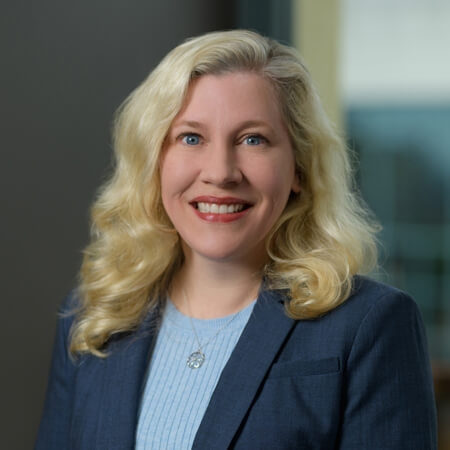The start of a new year often inspires reflections on the past, with renewed effort to apply any lessons we've learned to try to anticipate

Special Needs Families: Now ABLE to Save
When parents are asked what they want for their children in life, the answers you are most likely to hear are “to be happy and to be self-sufficient”. While there is no clear path to these goals for anyone, there are inherently more challenges facing children with special needs. Covering even the basics like healthcare and education, in addition to food, clothing and shelter, can be significantly more expensive and require more effort and planning. Until recently, special needs families were faced with an unusual financial planning challenge: How to save and invest for their child’s future needs, or allow the child to provide for themselves, and not lose access to the public benefit programs that are critical to their quality of life?
In 2014, the Achieving a Better Life Experience (ABLE) Act was passed to allow for the creation of tax-advantaged savings accounts for individuals with disabilities and their families. ABLE accounts allow the account owners, who are also the beneficiaries, to save with post-tax dollars and avoid taxes on the earnings in the account. Contributions can be made by anyone — family, friends, and the beneficiary. What is significant about ABLE accounts is they largely protect the beneficiaries’ ability to apply for public benefits such as the Supplemental Security Income (SSI), Supplemental Nutrition Assistance Program (SNAP), and Medicaid. In the past, individuals needed to live in virtual poverty with no more than $2,000 in savings or retirement funds to remain eligible for these programs. For the millions of individuals living with disabilities, the savings in an ABLE account can help complement the benefits they receive from their own employment, government programs, and other sources such as a Special Needs Trust. ABLE accounts are also inexpensive to establish and administer.
Any individual that becomes significantly disabled before their 26th birthday is eligible to open an ABLE account. These criteria are met automatically for anyone under age 26 already receiving SSI and/or SSDI benefits. For anyone over age 26 and not currently receiving benefits, a physician can certify the severity of the disability, the associated limitations, as well as the age of onset.
While California has yet to roll out an ABLE program of their own, this shouldn’t be viewed as a limiting factor for CA residents. There are many other programs that are open to residents nationwide. ABLE accounts are currently subject to an annual contribution limit of $15,000 from all sources – including rollovers from a 529 Plan account – unless the beneficiary is working. In this case, the beneficiary can make additional contributions beyond the $15,000 limit up to the lesser of their compensation or the federal poverty limit for a one-person household, currently $12,140. ¹
Once an ABLE account is established, it is critically important to understand the coordination of benefits between the account, SSI, and Medicaid. The first $100,000 in an ABLE account is exempted from the SSI resource limit. However, any account balance over this threshold will suspend the beneficiary’s SSI cash benefit until the ABLE account balance falls below $100,000. The account balance has no effect on Medicaid benefits. ABLE accounts can be used to fund expenses related to the beneficiary’s disability that assist with maintaining health, independence, and quality of life. Also, be aware that there may be a Medicaid payback requirement if any funds remain in the ABLE account at the death of the beneficiary.
Parenthood is an amazing journey that can be filled with dramatic highs and lows. For parents of children with special needs, these moments can be significantly magnified. While the ABLE Act doesn’t provide a perfect solution for these families, it does recognize the need for more tools with which to help them.
Articles and Commentary
Information provided in written articles are for informational purposes only and should not be considered investment advice. There is a risk of loss from investments in securities, including the risk of loss of principal. The information contained herein reflects Sand Hill Global Advisors' (“SHGA”) views as of the date of publication. Such views are subject to change at any time without notice due to changes in market or economic conditions and may not necessarily come to pass. SHGA does not provide tax or legal advice. To the extent that any material herein concerns tax or legal matters, such information is not intended to be solely relied upon nor used for the purpose of making tax and/or legal decisions without first seeking independent advice from a tax and/or legal professional. SHGA has obtained the information provided herein from various third party sources believed to be reliable but such information is not guaranteed. Certain links in this site connect to other websites maintained by third parties over whom SHGA has no control. SHGA makes no representations as to the accuracy or any other aspect of information contained in other Web Sites. Any forward looking statements or forecasts are based on assumptions and actual results are expected to vary from any such statements or forecasts. No reliance should be placed on any such statements or forecasts when making any investment decision. SHGA is not responsible for the consequences of any decisions or actions taken as a result of information provided in this presentation and does not warrant or guarantee the accuracy or completeness of this information. No part of this material may be (i) copied, photocopied, or duplicated in any form, by any means, or (ii) redistributed without the prior written consent of SHGA.
Video Presentations
All video presentations discuss certain investment products and/or securities and are being provided for informational purposes only, and should not be considered, and is not, investment, financial planning, tax or legal advice; nor is it a recommendation to buy or sell any securities. Investing in securities involves varying degrees of risk, and there can be no assurance that any specific investment will be profitable or suitable for a particular client’s financial situation or risk tolerance. Past performance is not a guarantee of future returns. Individual performance results will vary. The opinions expressed in the video reflect Sand Hill Global Advisor’s (“SHGA”) or Brenda Vingiello’s (as applicable) views as of the date of the video. Such views are subject to change at any point without notice. Any comments, opinions, or recommendations made by any host or other guest not affiliated with SHGA in this video do not necessarily reflect the views of SHGA, and non-SHGA persons appearing in this video do not fall under the supervisory purview of SHGA. You should not treat any opinion expressed by SHGA or Ms. Vingiello as a specific inducement to make a particular investment or follow a particular strategy, but only as an expression of general opinion. Nothing presented herein is or is intended to constitute investment advice, and no investment decision should be made based solely on any information provided on this video. There is a risk of loss from an investment in securities, including the risk of loss of principal. Neither SHGA nor Ms. Vingiello guarantees any specific outcome or profit. Any forward-looking statements or forecasts contained in the video are based on assumptions and actual results may vary from any such statements or forecasts. SHGA or one of its employees may have a position in the securities discussed and may purchase or sell such securities from time to time. Some of the information in this video has been obtained from third party sources. While SHGA believes such third-party information is reliable, SHGA does not guarantee its accuracy, timeliness or completeness. SHGA encourages you to consult with a professional financial advisor prior to making any investment decision.
Other Posts By This Author
- – Initial Steps to Take for Widows
- – Understanding the Terms: All About That Basis
- – Home Sweet RV
- – The Basics of Long-Term Care Insurance
Related Posts









